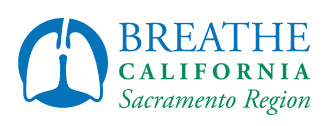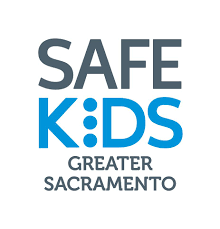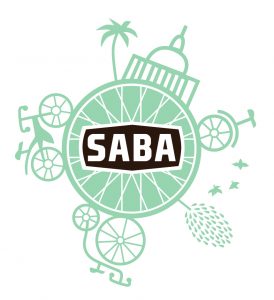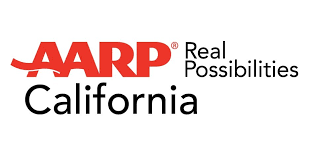Over 30 cities around the world have taken action to prioritize streets for pedestrians and bicyclists in response to the COVID-19 pandemic.
It’s time for Sacramento to join.
The COVID-19 pandemic has affected every aspect of our daily life, including how we move and what transportation we chose to do it with. Our streets and green spaces are more active than ever with residents walking and biking for transportation to essential jobs, groceries, and for physical and mental health. But our sidewalks throughout the City are too narrow to support safe social distancing, and serious infrastructure gaps in sidewalk and bike networks further reduce the ability of residents to walk and bike safely during stay at home orders.
Sacramento Area Bicycle Advocates and WALKSacramento are joining forces to call upon the City of Sacramento to partially or fully close streets in order to keep residents safe from COVID-19, create more local public space, and continue providing safe access to essential businesses and services. Our official letter to the City can be found here.
We realize this is a challenging time of disruption, and that while everyone is pondering and planning for the “new normal” our hope is to encourage the City to expedite many of the plans it already has in place to create a cleaner, safer Sacramento for all ages and abilities, now and in the future.
Progress Update 6/19/2020
Thank you for taking the time to complete the Slow and Active Streets survey and for your interest in improving conditions for walking and biking during shelter-in-place. At this time, the City of Sacramento has decided not to move forward with its Slow and Active Streets pilot program.
The objective of the Slow Active Streets Pilot was to support community health by creating space for walking, bicycling and being active during the COVID-19 pandemic and to relieve areas that have crowded sidewalks or no sidewalks. The City had planned to implement this pilot program on two or three streets. Staff decided upon the following criteria to identify candidate streets:
- Prioritizing Sacramento’s disadvantaged communities.
- Prioritizing Sacramento’s communities that do not have nearby access to parks and parkways.
- Prioritizing high density communities (multi-family) that may not have yards.
- Prioritizing corridors with schools or community centers serving meals.
- Not imposing this pilot on any neighborhood and ensuring community support.
After reviewing survey results, the City determined that it did not have enough information to begin implementing this program in the neighborhoods it had hoped to serve. Instead, the City plans to use the staff time that would have been allocated for the slow streets program to focus on continuing to strengthen relationships and communication with all neighborhoods within the city, and to better understand and address community transportation needs more broadly, whether that includes Slow Streets, improving high-quality transit, or other alternative transportation options.
If you are still interested in Slow Streets or other opportunities to improve walking and biking in your neighborhood, we encourage you to share your thoughts through the City’s 2040 General Plan questionnaire. The questionnaire is open through Friday, June 19th, and can be found here.
WALKSacramento, SABA, and all our partner organizations are continuing discussions to identify opportunities to re-launch a slow streets initiative. If you are interested in getting progress updates or want to get involved, please email contact@walksacramento.org.
Progress Update 5/18/2020
Since our initial letter and outreach to partner organizations, community groups, and Neighborhood Associations, the City of Sacramento has invited us to partner on a “Slow and Active Streets” initiative. We have been working to identify two to three corridors of streets that could be “slowed” to through traffic, giving people more space to access essential needs and get essential exercise while maintaining safe social distance.
What’s next?
We are continuing to have conversations with neighborhood groups and community leaders to discuss what a “Slow and Active Streets” program could look like in Sacramento neighborhoods. It is important that any implementation is supported and wanted by the community.
We need to hear from you on where you think we should slow streets. Criteria should be based on the following:
- No wider than two lanes;
- Primarily residential;
- Streets do not have bus routes or closure would not impact bus service and
- Have a speed limit of 25 MPH or less.
Let us know what streets you’d like to see “slowed” by filling out the survey in English or Spanish in Step 1 below. The survey will close May 27th.
The time is NOW to stand up for Slow Streets.
Here are FOUR ways you can help:

TELL US WHAT STREETS YOU WANT TO SEE SLOWED
It is important that any effort to slow streets is wanted and supported by the residents and community that street is located in. Help us identify what streets should be slowed. In order for streets to be considered, they must, be two-way streets; have a speed limit of 25 mph or less, and are quiet, low-volume vehicle streets.
The survey is now closed. Please check back soon for updates. We strongly encourage you to continue contacting your councilmember, email us directly: contact@walksacramento.org, and share this effort with your neighbors.

CONTACT YOUR CITY COUNCILMEMBER
Call or email your City councilmember to tell them this is a priority. Download the template email to contact your councilmember now.

SIGN THE PETITION
Join the 850 people and counting who have already signed the citizen-led petition to slow streets.

SHARE THIS PAGE WITH YOUR FRIENDS AND FAMILY
We need all the support we can get.
Please share this effort with your friends and family and encourage them to join the cause.
Press Mentions
- Sacramento To Block Or Limit Traffic On Streets To Help Social-Distancing – Capitol Public Radio 5/2/2020
- Sacramento Restaurants Could Be Allowed to Expand to Sidewalk, Street Dining – ABC10 5/13/20
- Farm to Fork Al Fresco – SABA 5/15/20
- Slowing Streets for Walking, Biking, and Dining, Slow Active Streets pilot project will showcase streets as public amenities – Sacramento Area Council of Governments 5/23/20
What are “slow” or “stay healthy” streets?
“Slow streets” or “stay healthy streets” are streets and routes that prioritize street space for pedestrians and bicyclists and limit vehicle traffic during the COVID-19 pandemic. Slow streets are not intended to go against public health orders or encourage large crowds or gatherings but rather relieve crowded areas to support health department guidance for physical distancing.
Slow streets should first prioritize transportation routes for essential goods and services including more space near grocery stores, food distribution sites, medical sites and COVID-19 “drive through test sites” which must support those without a vehicle, walking and biking access to transit hubs, and low-stress routes for essential workers to get to and from work safely. Routes must also be prioritized in areas and neighborhoods where green space and healthy food is less accessible under current conditions.
For the most up to date information on Sacramento County’s Public Health Order regarding COVID-19 shelter in place orders and essential activities visit: https://www.saccounty.net/COVID-19
Are there other cities taking action?
Cities and now Countries around the world have already taken action to implement tactical urbanism, dedicate funding and expedite active transportation projects to support slower streets during the COVID-19 pandemic and for longer term change. Here are a few examples and resources:
Cities and Countries Taking Action:
- Oakland to Open 74 Miles of Streets for Walkers and Cyclists – Streetsblog SF
- New Zealand First Country To Fund Pop-Up Bike Lanes, Widened Sidewalks During Lockdown – Forbes
- Minneapolis launches Stay Healthy Streets during COVID-19 – City of Minneapolis
- De Blasio Commits to 100 Miles of ‘Open Streets’ – Streetsblog NYC
- San Francisco Closes Golden Gate Park’s JFK Drive and McLaren Park’s Shelley Drive to Vehicles to Support Physical Distancing – Office of the Mayor, City and County of San Francisco
- Barcelona converts parking spaces to wider sidewalks and bike lanes – Lavanguardia
- Local Actions to Support Walking and Cycling During Social Distancing Dataset – PedBikeInfo
Resources:
- Smart Growth America’s Complete Streets + COVID-19 Community Response Map Tracker
- Rebalancing Streets for People Webinar – Toole Design Group
- National Association of City Transportation Officials (NACTO) COVID-19 Transportation Resource Center
- Vision Zero Network: Global Lessons for the U.S. Vision Zero Movement
- COVID-19 Advocacy Tools – Rails to Trails Conservancy
- Safe on the Road’s Open Streets Guide for Implementation in Response to COVID-19
- Closing Streets to Create Space for Walking and Biking During COVID-19 Full Webinar
- Open Streets, Shared Streets, Healthy Streets—Creating Mobility and Physical Activity Solutions Now and for the Future – Safe Routes Partnership
What are the benefits?
Public and Personal Health
The Sacramento County Department of Health has deemed outdoor recreation activity, including, walking, hiking, biking, and running as an “essential activity” as long as social distancing can be practiced.[1] Sacramento residents are using sidewalks, parks, and trails as a way to maintain physical and mental well-being, however the crowding of these critical community assets put public health at risk. Closing streets will lessen the burden on parks and trails while creating more public space for residents to safely exercise for physical and mental health benefits.
A Public Health Perspective on Slow and Healthy Streets: A Conversation with a Public Health Expert NACTO Webinar
Janette Sadik-Khan, a leading voice on urban transportation policy and Dr. Keshia Pollack Porter, a nationally-recognized epidemiologist and expert in the built environment discuss why street design and policy is critical in supporting public health goals during COVID-19 and for the long term.
City Streets During Coronavirus: a Public Health Perspective from NACTO on Vimeo.
For more information, visit NACTO’s COVID-19: Transportation Response Center to learn how cities are working across the country to protect essential workers including healthcare workers, food supply workers, delivery workers, and transit workers.
Economic Benefits and Support for Local Businesses
Fully or partially closing streets encourages active travel along those routes due to reduced vehicle traffic and speeds. With more people walking and biking now than ever before, closing streets along corridors to essential businesses such as grocery stores and restaurants not only provides safe access to these destinations, but also encourages residents to support these businesses by buying takeout during recreational trips. Once social distancing eases and people can return to patronizing local shops, restaurants, and cafés in person, patrons who walk and bike to destinations are more likely to spend up to three times more than vehicle drivers, providing much needed economic stimulus to the city.[2] Research has shown that communities with cycling infrastructure is correlated with strong retail sales. [3]
Progress Toward Planned Complete Streets Projects and the City’s Vision Zero Action Plan
To date, the City has made progress on several critical multimodal planning efforts such as the Broadway Complete Streets Project, Stockton Boulevard Corridor Study, and Central City Mobility Project. These projects, consistent with the Vision Zero Action Plan, support the City’s long-term goals to reduce traffic injuries and fatalities, While overall traffic volume has decreased by approximately 35% as a result of COVID-19, excessive speeding citations have spiked by as much as 87% statewide on freeways.[4] Implementing simple, low cost traffic calming measures such as temporary street closures will slow the speed of traffic in neighborhoods and improve safety for all road users. Additionally, these temporary closures can maintain momentum on planning projects by allowing communities to envision longer-term infrastructure improvements and strengthen grant applications for future implementation.
Progress Toward the Mayors’ Commission on Climate Change Goals
One of the few “silver linings” of COVID-19 shelter in place orders are “cleaner pandemic skies”. Currently, the Sierra peaks are visible from our downtown. Photos of cities like Milan, Beijing and New York before and after sheltering in place orders were enforced present a clear opportunity on the importance of capitalizing on our lowered carbon emissions and moving forward with the goals put forth by the Mayors’ Commission on Climate Change, calling for “enhanced accessibility to low stress, connected infrastructure for walking and rolling”. Now is the time to jumpstart supporting the goal for 30% of all trips by active transportation by 2030.[5]
What are we recommending?
We recommend that any action taken by the City around “Slow Streets for Sacramento” incorporate the following priorities:
- Expedite multimodal projects already in place such as
- Stockton Boulevard Corridor Study
- Broadway Complete Streets
- Freeport Commercial Corridor Safety Study
- Vision Zero Corridors
- Implement “Slow Street” routes to parks and essential businesses to support health and the local economy
- Identify and establish low-volume, low stress alternatives to major arterial streets for walking and biking
- Restrict through traffic on neighborhood streets to allow for residential and emergency vehicle traffic only, and
- Align with the goals and recommendations of the Mayors’ Commission on Climate Change.
SABA and WALKSacramento stand ready to support the City in this effort by reaching out to our members and constituencies to get the word out and help communities engage in making these ideas a reality. We can also lead public engagement to help identify streets in locations around the city, if needed.
Supporting Organizations
To get your organization’s logo added, email a png of your logo to conact@walksacramento.org.




Design 4 Active Sacramento

Freeport Boulevard Traffic Safety Committee









